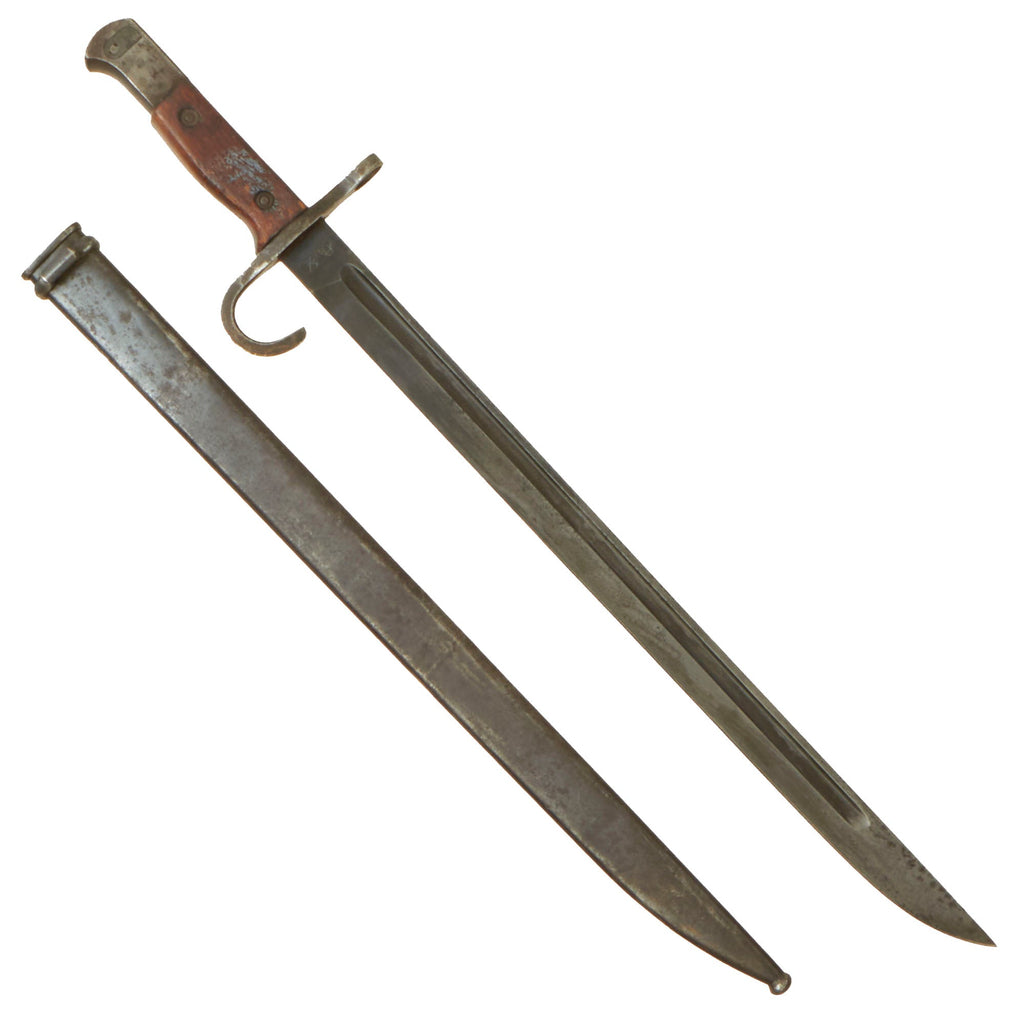Item Description
Original Item: Only One Item Available. This is an excellent condition, possibly unissued WWII issue Japanese Model 30 Arisaka rifle bayonet manufactured by Hikari Seiki Seisakusho Arsenal. It is the later pattern with a blued steel blade, rounded grip retained by rivets, and hooked quillon. It comes complete with its original steel scabbard.
Condition of the bayonet is excellent, with lots of the original finish and only light wear. The wooden grip scales are great, and the scabbard has a great finish and only light wear.
We very rarely see examples in this great condition. This would pair perfectly with any excellent condition Arisaka rifle.
Specifications:
Blade Length: 15 3/4"
Blade Style: Single Edge Bayonet
Overall length: 20 1/8“
Crossguard: 3 3/4”
Scabbard Length: 16 1/2"
History of the Type 30 Bayonet-
The Type 30 bayonet (三十年式銃剣 sanjunen-shiki juken) was a bayonet designed for the Imperial Japanese Army to be used with the Arisaka Type 30 Rifle and was later used on the Type 38 and Type 99 rifles.
Some 8.4 million were produced, and it remained in front-line use from the Russo-Japanese War to the end of World War II.
Type 30 Bayonet was a single-edged sword bayonet with a 400 millimetres (15.75 in) blade and an overall length of 514 millimetres (20.24 in) with a weight of approximately 700 grams. The Type 30 bayonet is also known as the "Pattern 1897 bayonet". Early Type 30 bayonets usually sported a hooked quillon guard that gave it a distinct look, but later models had a straight hand guard.
This bayonet is of the pre-war early pattern, with a hooked quillon cross guard, screw retained contoured grips, a contoured "bird's head" pommel, and bright steel fullered blade. This is the later pattern made at Kokura Arsenal before and during WWII. The base of the bayonet is marked with serial number 97922.
The design was intended to give the average Japanese infantryman a long enough reach to piece the abdomen of a cavalryman. However, the design had a number of drawbacks, some caused by the poor quality of forgings used, which tended to rust quickly and not hold an edge, and to break when bent.
These bayonets were manufactured from 1897 to 1945 at a number of locations, including the Kokura Arsenal, Koishikawa Arsenal (Tokyo) and Nagoya Arsenal, as well as under contract by private manufacturers including Matsushita, Toyoda Automatic Loom and many others, including Jinsen Arsenal in Occupied Korea.
- This product is available for international shipping.
- Eligible for all payments - Visa, Mastercard, Discover, AMEX, Paypal & Sezzle
















